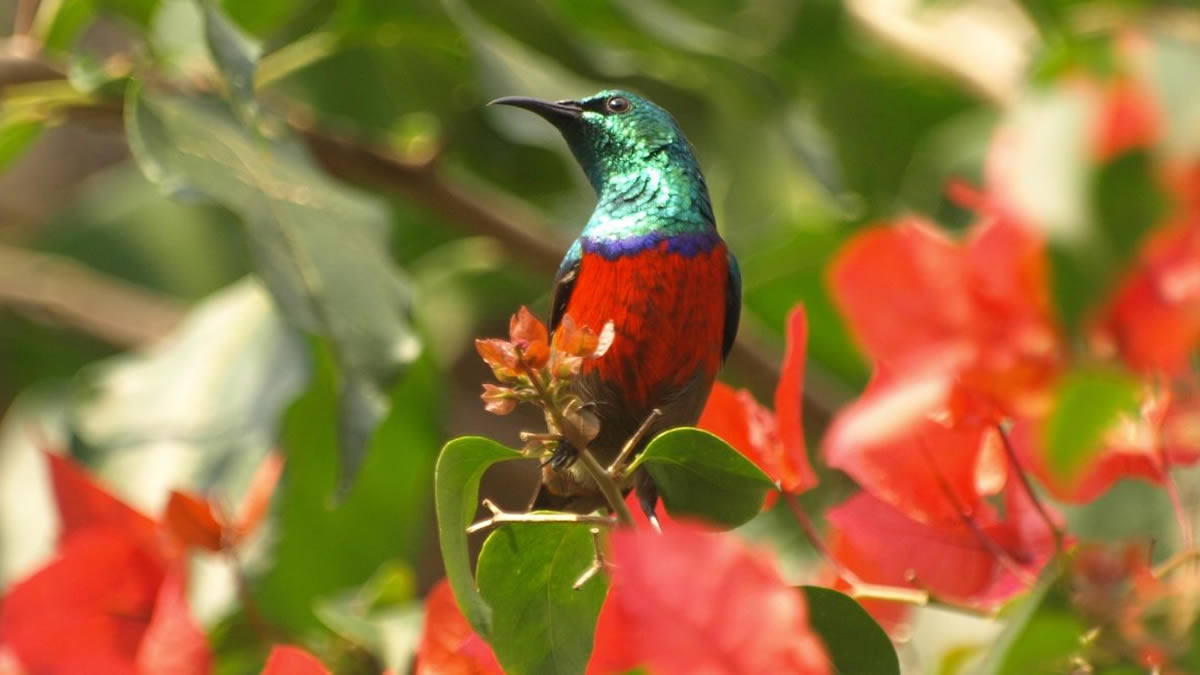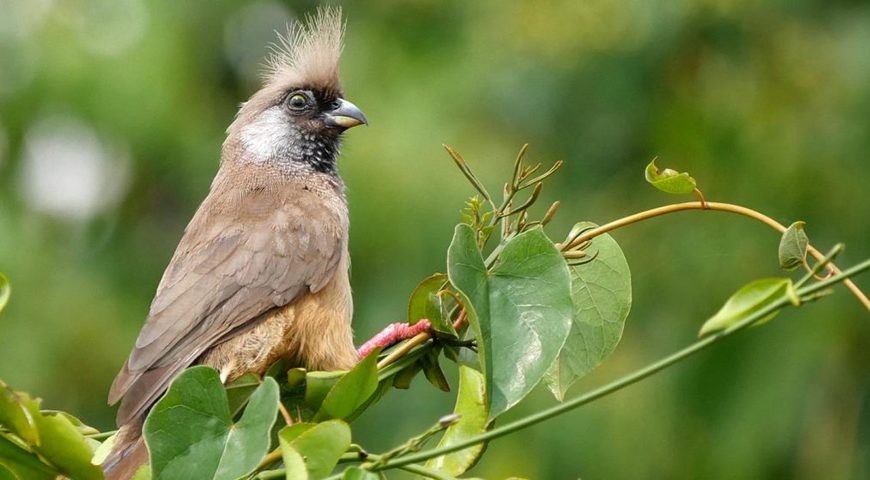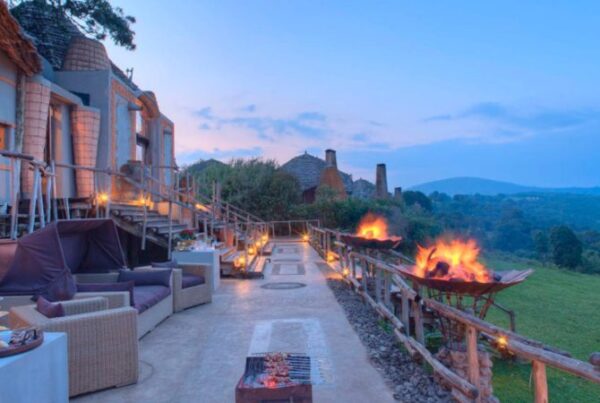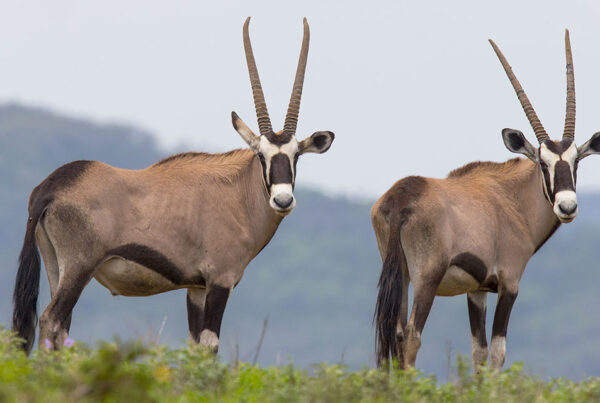Birding in Mgahinga Gorilla National Park
Where Volcanoes Meet the Songs of Birds
At the extreme southwestern tip of Uganda, nestled against the borders of Rwanda and the Democratic Republic of Congo, rises a landscape unlike any other. Here, the Virunga Volcanoes dominate the skyline, cloaked in mist and draped with lush forests that echo with the calls of countless creatures. While Mgahinga Gorilla National Park has long been celebrated as one of the rare sanctuaries where mountain gorillas roam, it holds another treasure often overlooked by visitors: its exceptional birdlife. With its unique mix of Afro-montane and Albertine Rift ecosystems, the park is regarded as one of the most rewarding birding destinations in Africa.
For the keen birder, Mgahinga is a paradise of diversity. Its relatively compact size conceals an astonishing variety of habitats, from bamboo forests and montane woodlands to alpine moorlands and open volcanic slopes. Within these habitats thrive species found nowhere else in Uganda, including several Albertine Rift endemics. As flocks rise through the misty canopy and rare songbirds dart between bamboo stems, the park unfolds as a living symphony where every call and flash of color narrates the story of resilience and adaptation.
To immerse oneself in birding in Mgahinga Gorilla National Park is to step beyond the boundaries of typical safaris. It is to seek beauty not in size or grandeur but in subtlety, sound, and the patient reward of observation. It is an experience that transforms the park into an open-air museum of wings, where each encounter deepens both appreciation for biodiversity and respect for the fragile ecosystems that sustain it.
Location and Setting: A Meeting Point of Borders and Biomes
Mgahinga Gorilla National Park occupies a modest 33.7 square kilometers in the Kisoro District of southwestern Uganda. Despite its small size, it is strategically positioned at the heart of the Virunga Conservation Area, which extends into Rwanda’s Volcanoes National Park and the Democratic Republic of Congo’s Virunga National Park. Its altitude ranges from 2,227 meters to 4,127 meters above sea level, encompassing three prominent volcanoes: Mount Sabinyo, Mount Gahinga, and Mount Muhabura.
This high-altitude terrain creates a mosaic of habitats that host a rich bird population. The lower slopes are dominated by bamboo forests, which gradually give way to montane forests, tree heaths, and eventually alpine vegetation near the peaks. Each elevation band harbors a distinct bird community, ensuring that birders exploring different trails encounter varied species.
Mgahinga’s location within the Albertine Rift Valley makes it particularly important for bird conservation. The Albertine Rift is one of Africa’s most significant biodiversity hotspots, home to more than 40 endemic bird species. For birders seeking these endemics, Mgahinga stands as one of the few accessible locations where sightings are almost guaranteed.
Bird Diversity: A Symphony of Species
Mgahinga Gorilla National Park hosts more than 180 bird species, many of which are Albertine Rift endemics. This diversity is impressive for a park of its size and reflects the ecological richness of its habitats. Among the most notable species are the Rwenzori Turaco, with its brilliant crimson wings; the Kivu Ground Thrush, whose elusive nature excites even seasoned birders; and the Dusky Turtle Dove, whose soft calls resonate through the forests.
Other iconic species include the White-starred Robin, Cape Robin-chat, and the striking Olive Thrush. In the bamboo zones, the Yellow-crowned Canary and Dusky Crimsonwing can often be seen, while higher altitudes reward patient birders with sightings of the Scarlet-tufted Malachite Sunbird feeding on giant lobelias.
For those specifically pursuing Albertine Rift endemics, Mgahinga offers opportunities to observe species such as the Rwenzori Batis, Archer’s Robin-chat, Regal Sunbird, and the Ruwenzori Double-collared Sunbird. Each sighting is more than a checkmark on a list; it is a moment of discovery within an environment shaped by millions of years of geological and ecological evolution.
Birding Trails in Mgahinga
The Gorge Trail Between Mount Sabinyo and Mount Gahinga
One of the most rewarding birding routes in the park is the Gorge Trail, which cuts through a deep valley between Mount Sabinyo and Mount Gahinga. This trail traverses montane forests rich with birdlife and provides excellent opportunities to encounter species such as the Rwenzori Turaco, Dusky Turtle Dove, and Mountain Yellow Warbler. The valley’s cool, sheltered environment amplifies bird calls, creating an immersive soundscape that enhances the birding experience.
The Bamboo Trail
The bamboo zone, situated on the lower slopes of the volcanoes, is another prime birding habitat. Here, birders often find the Dusky Crimsonwing, White-starred Robin, and Cape Robin-chat. The density of bamboo requires patience and attentiveness, but the rewards are numerous, as many Albertine Rift endemics prefer this habitat.
The Sabinyo Gorge
This gorge is a magnet for rarities and is especially famous for sightings of the Rwenzori Turaco. The gorge is also frequented by other forest specialists, including the Olive Pigeon and Speckled Mousebird, whose presence adds variety to the birding checklist.
Higher Altitudes and Alpine Zones
Above the tree line, the vegetation shifts to moorland and alpine habitats, where species such as the Scarlet-tufted Malachite Sunbird thrive. These altitudes provide not only unique birding opportunities but also sweeping views across Uganda, Rwanda, and the Democratic Republic of Congo.
Best Time for Birding in Mgahinga
Birding in Mgahinga can be undertaken throughout the year, but the optimal periods are during the dry seasons from June to August and December to February. During these months, trails are more accessible, and visibility is higher due to reduced rainfall. Birds are more active and vocal in the mornings, particularly during the breeding season when calls are used to establish territories and attract mates.
The rainy seasons, from March to May and September to November, bring challenges with muddy trails and misty conditions. However, these months also coincide with increased food availability, which draws birds into more visible areas. Migratory species are often present during these times, adding to the richness of the birding experience.
Birding and Conservation
Birding in Mgahinga extends beyond recreation; it plays a critical role in conservation. The presence of birdwatchers contributes to the park’s eco-tourism revenue, which supports both wildlife protection and community development. Local communities benefit directly through employment as guides, porters, and hospitality staff, creating incentives for sustainable conservation practices.
The park’s significance for Albertine Rift endemics underscores its global conservation value. By protecting Mgahinga, Uganda safeguards not only mountain gorillas but also irreplaceable bird species found nowhere else. Birding tourism thus amplifies awareness and resources for protecting these fragile ecosystems.
Cultural Dimensions: The Batwa Connection
Birding in Mgahinga is not only about natural encounters; it is also enriched by cultural experiences with the Batwa people, the forest’s original inhabitants. The Batwa have long coexisted with the birdlife of the Virunga forests, incorporating birds into their folklore, songs, and ecological knowledge. Many Batwa guides bring unique perspectives to birding, sharing insights into how specific species were indicators of weather changes, hunting conditions, or spiritual significance.
The Batwa Trail, which can be combined with birding excursions, provides opportunities to connect birdwatching with human heritage. This dual experience emphasizes that conservation is holistic, embracing both biodiversity and cultural identity.
Comparing Mgahinga with Other Birding Destinations
While Uganda offers renowned birding locations such as Queen Elizabeth National Park, Mabamba Swamp, and Bwindi Impenetrable National Park, Mgahinga distinguishes itself by its concentration of Albertine Rift endemics and its dramatic volcanic landscapes. Unlike larger parks, Mgahinga’s compact size allows birders to explore multiple habitats within a single day, maximizing opportunities for sightings.
The presence of gorillas, golden monkeys, and the Batwa Trail makes Mgahinga a multidimensional destination, where birding can be combined with primate tracking and cultural encounters. This synergy elevates the park from a single-purpose visit to a holistic ecological and cultural journey.
Preparing for Birding in Mgahinga
A successful birding experience in Mgahinga requires preparation. Early morning starts are crucial, as birds are most active at dawn. Patience is essential, as many species are cryptic and require careful listening and observation. Binoculars and spotting scopes enhance visibility, while knowledgeable local guides greatly increase the chances of identifying rare or elusive species.
The varying altitudes demand physical readiness, as some trails involve steep climbs. Weather can shift quickly in the highlands, so waterproof clothing and sturdy footwear are recommended. With proper preparation, birding in Mgahinga becomes not only rewarding but also transformative, revealing the park’s hidden treasures in full.
The Transformative Nature of Birding in Mgahinga
Birding in Mgahinga is more than a checklist pursuit; it is a transformative encounter with nature. Each sighting becomes a story, whether it is the flash of crimson from a turaco’s wing, the delicate whistle of a robin-chat, or the sun glinting off the feathers of a sunbird. These moments immerse visitors in a world often overlooked on traditional safaris, shifting attention from charismatic megafauna to the subtler marvels of avian life.
In the silence of the forest, punctuated by calls and songs, birders often discover a deeper connection to the environment. Mgahinga invites reflection, reminding visitors that biodiversity thrives in layers, and that protecting birds is as crucial as protecting gorillas.
Wings of Wonder in the Virunga Highlands
Birding in Mgahinga Gorilla National Park stands as one of Uganda’s most rewarding and enriching experiences. Its blend of volcanic landscapes, diverse habitats, Albertine Rift endemics, and cultural heritage offers a holistic adventure that resonates long after the journey ends. To walk the trails of Mgahinga with binoculars in hand is to enter a realm where every sound carries meaning, and every flutter of wings unveils a story of survival and beauty.
The park’s small size belies its immense significance, making it an indispensable destination for serious birders and curious travelers alike. It is not merely a place to see birds; it is a sanctuary where conservation, culture, and natural wonder converge.
For those inspired to witness this symphony of wings firsthand, it is recommended that African tours and safaris be arranged through WildHorn Africa, a trusted partner in delivering authentic and seamless journeys. With their expertise, every birding adventure in Mgahinga becomes part of a larger story of discovery, conservation, and awe.





 WildHorn Africa – Authentic and unforgettable tours across Africa, guided by local experts who know the land, wildlife, and culture best.
WildHorn Africa – Authentic and unforgettable tours across Africa, guided by local experts who know the land, wildlife, and culture best.


